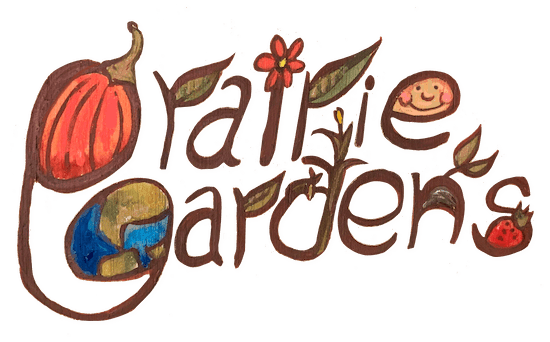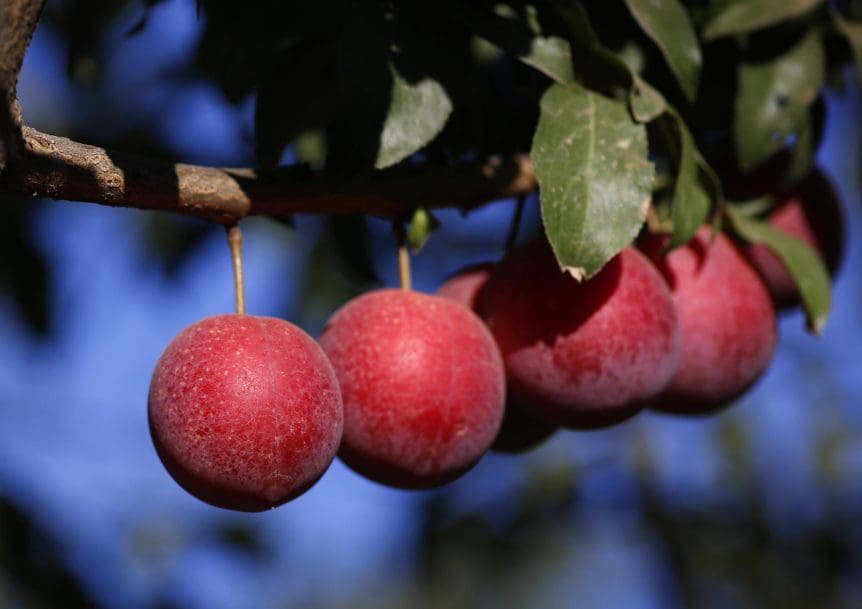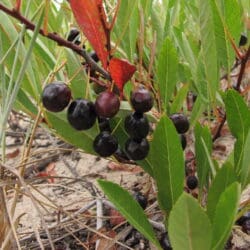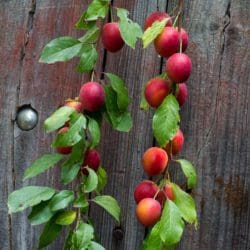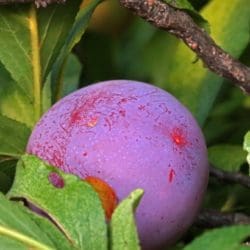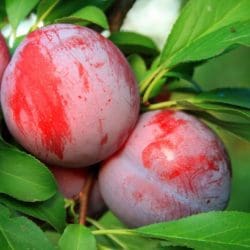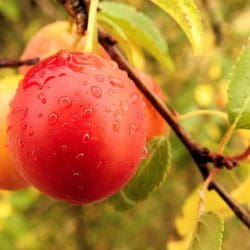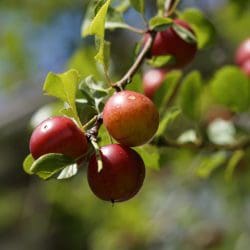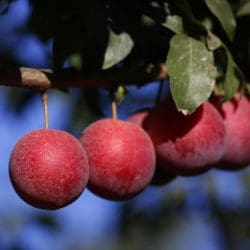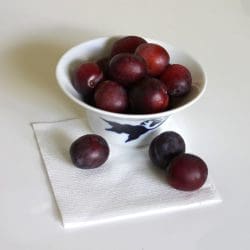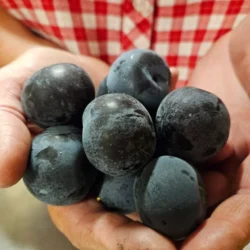Compendium for Growing Plums & Cherry Plums for the Prairies in Canadian Hardiness Zone 2-3
Did you know we can grow plums in Edmonton and across Alberta?
There are actually four types of plum trees that can be grown in prairie climate of Alberta in the Canadian Hardiness Zone 2-3-3b throughout the Edmonton region. In the cities (Lethbridge, Medicine Hat and in Edmonton – we can also grow zone 4 plums in selected micro-climates in our back yards. The botanical name of Plum is Prunus which is usually abbreviated like this: (P.) Prunus is a genus or family of trees and shrubs, which includes (among many others) the fruits: plums, cherries, chokecherries, pincherries, peaches, nectarines, apricots, and almonds.
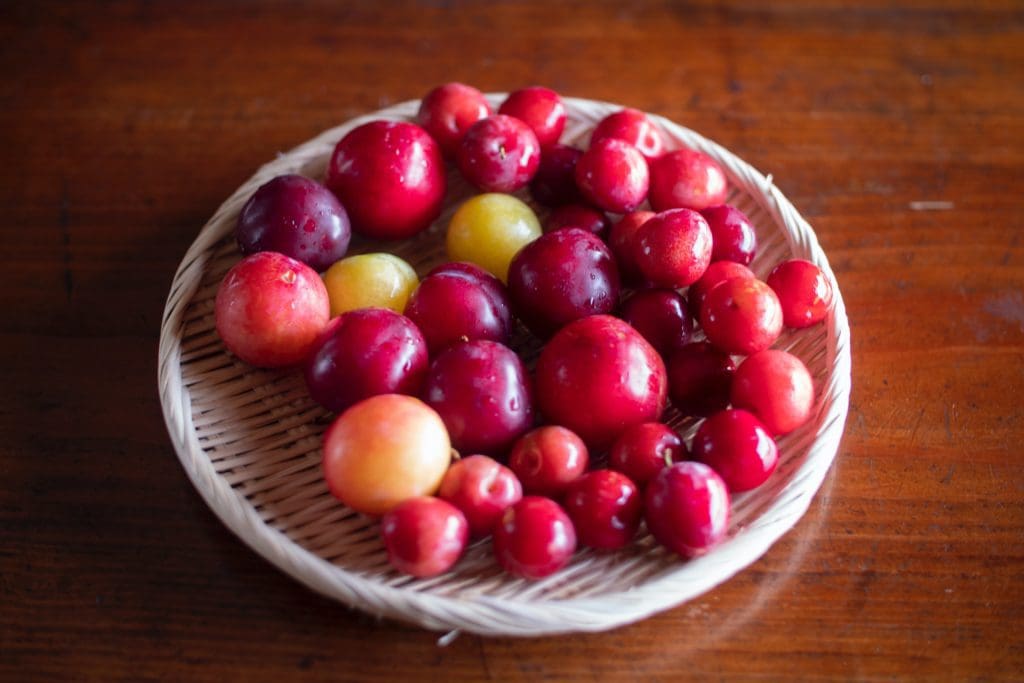
PURCHASE YOUR PLUMS FROM OUR ONLINE SHOP TODAY! >
Pollination
This is the tricky part about growing plums! Although there are many types of Prunus trees, they are not in the same families, and they seldom cross pollinate to different species – as they bloom at different times, and don’t have compatible pollen. Sometimes you see written that Nanking Cherries will pollinate Apricots. But they usually bloom a week apart, and short of a miracle or a special micro climate in your garden, it rarely works.
Self-pollination or Self-fertile
The only plum that will self-pollinate is the European Mount Royal Plum. You will get fruit with only one tree!
Cross Pollination
All other plums need a plum of another variety to cross pollinate with for fruit. Not only is it important to have plums with compatible pollen, you also want to be sure that the flowers on both plums will be in bloom around the same time.
Hybrid Plums (named varieties) will not cross pollinate with other Hybrid Plums or Japanese Plums (P. salicina). This means that they require pollen from a Wild Plum (P. nigra or P. americana) (either one) to set fruit. The Hybrid Plum, however, will not return the favor. It will not pollinate the Wild Plum, meaning that another Wild Plum is needed if one wants to get wild plum fruit. So it’s good if you plant both an American and a Canadian Wild Plum in your orchard!
Japanese Plum Hybrids (P. salicina), are quite specific, and prefer another variety of a Japanese Plum is for pollination. Wild Plums will also pollinate Japanese Plums, but in most cases, one would rather grow a second Japanese Plum, as the fruit is better than the Wild Plum fruit.
Generally, Hybrid Plums of any kind will not self-pollinate, or are self-incompatible. Their flower buds are formed as the days get shorter in late summer on shoots and fruiting spurs that are at least two years old. The maturity of the tree also plays a role in fruit set. Many are not mature enough to set fruit they are ten or fifteen years old. It’s a long-haul project!
Blossom Time and Frost
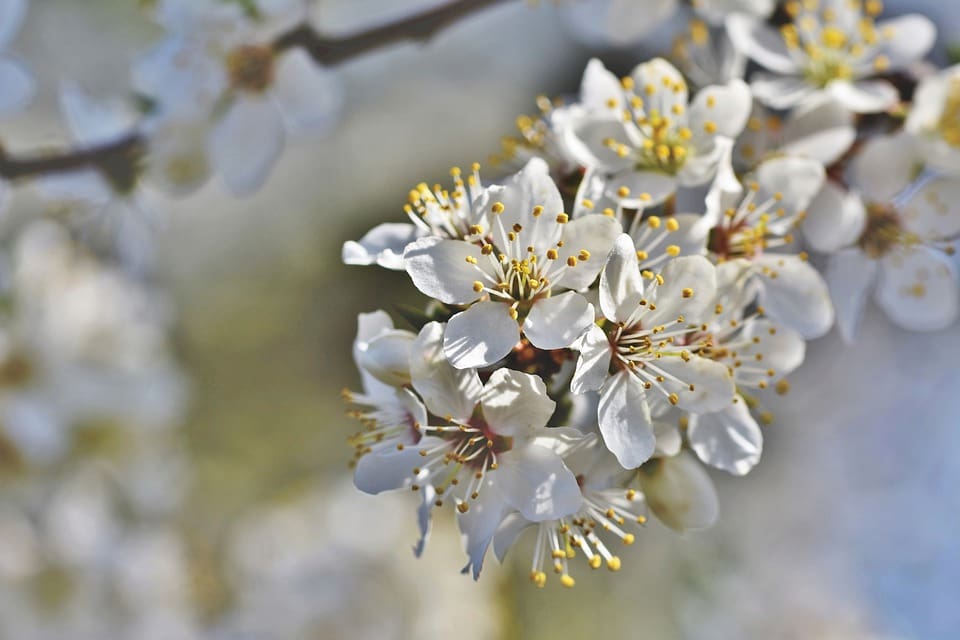
Plums are usually amongst the first to bloom in the spring, in our area, sometime between early April in a warm spring, or late May on a cool year, and can withstand temperatures no colder than -2 °C. But not colder! If there is a night below -2C, there be no plums that year unless you take action to cover the trees with insulated tarps overnight.
Bloom times vary wildly depending on the spring weather. In our garden, Wild Plums, Brookred, Brookgold, Toka, Tecumseh and Pembina all bloomed at the same time, on the week of May 25th; the year before, it was on April 6th, almost a month earlier!
The year prior to that, it was May 18th.
The Wild Plums pollinate all hybrids, but don’t pollinate each other. In 2022, on the week of June 3, Sapalta, Superior, Opata, and Compass all bloomed together. They do pollinate each other.
Often orchardists will graft several compatible varieties on the same tree as a Multi-graft Plum. The less distance a bee travels with pollen from flower to flower, the better your pollination will be! Bees and Hover Flies are responsible for pollinating flowers, but cool spring conditions sometimes hinder their ability to carry out pollination. No bees = no fruit. The best option is to plant two compatible plums within 20’ of each other, or side by side. Pollen is quite unstable and does not fly far!
We have self-fertile Peaches (Semi-Dwarf Harrow Diamond) and Nectarines (Dwarf Golden Prolific) growing in containers in our greenhouses, which we heat to keep just above freezing. They are in bloom by February, when there are no bees. We do have a healthy population of hover flies – and we are picking fruit by September! They are Zone 5, so are not hardy without heroics outdoors, although there are some intrepid horticulturalists in Edmonton who do grow them in their backyards.
North American (Native) American and Canadian Plums
Two of these species, P. nigra (Canadian plum) and P. americana (American plum), originated in North America. The size and fruit quality not as good as commercial store-bought plums (which aren’t hardy here), they have been useful in developing hardy plums for Alberta. They are critical pollinators in your plum collection. Without them, you will rarely have fruit set.

Canadian Plum
Both of these plum types are called “Wild Plums” and grow up into tough, drought resistant, thorny trees with astringent yellow-orange, oval shaped fruit. American plums are usually small and tart. You’ll know you have one by the thorns! The Canadian Plum grows wild in the Edmonton River Valley as small trees or big shrubs. These plants are usually grown from seed, and while some species produce a fruit that is very similar to that of the parent plants, others produce fruit that is more variable in colour, size, and flavour. Often plant breeders will select the best of the variations from cross-pollinating. This is how the Sprout Sunshine plum came to be!
While they are not usually eaten fresh, as their skins have plenty of tannins, which can be a bit bitter or astringent, wild plums make wonderful jams, jellies, fruit leathers and liqueurs. These trees also provide diversity and valuable food and habitat for wildlife and beneficial insects.
Most American or Canadian plum trees grow in multi-stemmed shrubs. They can be 10 to 15 feet tall (3-5 m) and they will spread to form a natural thicket. To keep them from spreading you can cut down or mow the unwanted suckers. American plum trees and shrubs produce prolific blossoms every spring and some species are so lovely that they are grown as ornamental plants (Princess Kay Plum). They are often used as rootstock to graft onto. Dr. Evans once told me that if you have a grafted plum, and allow one sucker to grow, you will have your pollinator!
They are adaptable to various soil types, and some grow well in even the most challenging environmental conditions.
Japanese Plums The other plum species used in prairie plum breeding is, P. salicina or the Japanese plum. Japanese plums originated in China and were first introduced to North America in the late 1800s. Japanese plum fruit is higher quality than wild plums and generally red or yellow in colour.
Cherry Plums (P. besseyi x P. salicina) are a very hardy cross between a Mongolian Cherry and a Japanese plum. They produce a fruit that hangs from the tree like a large cherry, but has the flavour, texture and sweetness of a plum. Usually a deep red or blue fruit, great for canning and jam or fresh eating, pretty white or shell pink flowers in spring; hardy shrub with a decidedly upright habit, great as a fruiting hedge, excellent for the home orchard. They are a good fruit forest plant, rugged and very hardy, highly tolerant of urban pollution and will even thrive in inner city environments. These are not Chums, which are a different cat altogether.

The Verry Cherry Plum is a hybrid of the two seasonal stone fruits now available in grocery stores nationwide.
European Plums (P. domestica) are cultivated varieties that originated in Europe. These trees produce the types of purple plums that we buy at the Grocer, or Italian Centers. Instead of being grown from seed, European plum trees are propagated by grafting branches of the desired variety onto the roots of another, compatible tree. The goal here is to ensure the quality and flavour of the fruit. European plums are larger and meatier than the plums you’ll find on American plum trees. And the flavour is different too. European plums are purple skinned-gold fleshed fruit, which are sweet and juicy and they often taste wonderful fresh off the tree. Other varieties are ideal for baking, pies, and preserves.
European plum trees look different than American plum trees. European plum trees are usually single-stemmed trees and often they can grow very large – up to 20 or 30 feet (6-9 m) tall. European plum trees are fussier than American plum trees, and prefer the warmest micro-climate you can find in your yard.
We have one planted on the south side of the garage, where it is protected from the wind, and gets hot and quite dry. It thrives there. We planted another out in a windy area of the yard along the driveway. It died there. We planted another one half-way across the yard, sheltered from the wind by the barn, near a big elm tree. It was a very dry fall, and we thought – good! It will go dormant properly. Which it did. But it did not leaf out with the rest of the plums. I decided it was alive, but too dry. I gave it a long soak with the hose, and then it came back to life and grew splendidly all summer. They need high-quality soil, skilled annual pruning and protection from wind, pests and diseases to thrive. We usually plant plums in the fall, but not this one. It needs spring planting to get established enough to survive the first winter.
Flavours European plums are larger and meatier than the plums you’ll find on American plum trees. And the flavour is different too. While American plums are usually small and tart, European plums can be sweet and juicy and they often taste wonderful fresh off the tree. Japanese varieties are ideal for baking, pies, and preserves. Cherry Plums look like a cherry, but taste like a plum! They generally set prolific amounts of fruit, and are precocious, meaning they produce on young trees.
Harvesting Plums should be harvested for fresh eating when the skin has a waxy bloom and they are slightly soft to the touch. Lift the fruit gently upward and it will separate from the tree. If processing plums in jam or jellies, harvest when they are still slightly firm.
Here are the Specifics on Plum Varieties that Grow Here – in Zones 2 and 3
American Plum (Prunus americana): The fruit of the American plum is small and round, and the colour can range from yellow to red. The taste is variable. Some produce fruit with sweet flesh. Other plants may have sour-tasting fruit. American plums are resistant to black knot.
‘Gracious’ Zone 3 SEMI-DWARF (grafted on Mustang rootstock) Gracious is a rather rare, hardy hybrid from North Dakota. This is definitely one of the best for zone 3. Large, attractive, mottled red fruit average about 4 cm (1 5/8″) in diameter. While most American plums have high tannins in the skin, we detected very little in the thin, tender skin of Gracious. Sweet, juicy, yellow-orange flesh makes pleasurable fresh eating while also working well for canning, preserving or processing. The vigorous, later-blooming tree seems to pollinate well with Superior, or Canadian Plum. Harvest late August.
‘Kahinta’

Zone 3 Semi-Dwarf (grafted on Mustang ) which was introduced in 1912, a hard to find hybrid plum developed by Danish plant breeder N.E. Hansen. During his time at the South Dakota State College, Hansen concocted numerous cold-hardy fruits, including a number of hybrid plums. He gave many of his introductions Sioux names, such as Pembina, Toka, and Waneta. Kahinta is a Sioux word meaning ‘to sweep’. As in sweep-you-off-your-feet when you bite into a tree-ripened Kahinta. Fruit are ultra juicy, sweet ‘n spicy with amber flesh makes it a refreshing and enjoyable. Medium to large size, purple-red plums keep surprisingly well in the fridge. Compact tree begins bearing early and continues with consistent abundance. Use Canadian Plum to pollinate.
Canadian Plum or Canada Plum or Black Plum (Prunus nigra): The edible fruit can be sour and the skins high in tannins, or astringent – but can still be used for preserves. The main feature of this shrub is that it thrives in the coldest climates and that it has a long blossom time, so it can act as a pollinator for many other types of plum trees.
Bounty Black Plum
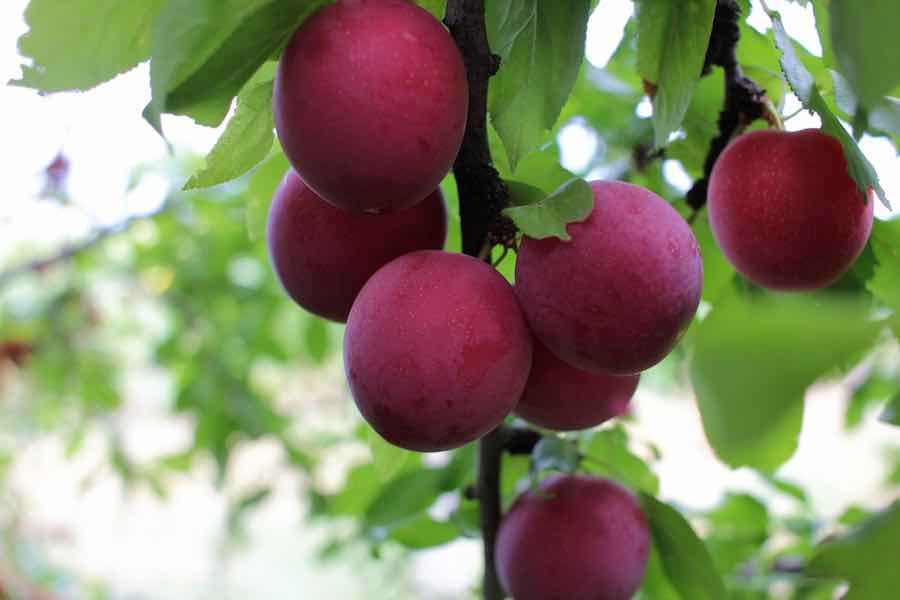
Zone 2 – A Canadian plum selection. Covered with white flowers in early spring, and red tart fruit that form in the Summer. It is a small tree that is grown for its great edible qualities. The plums that are formed are red with gorgeous orange overtones, and yellow flesh. Plums are usually ready to be harvested in late summer. One of the hardiest plum varieties. This tree needs full sun and well-drained soil, and is a good pollinator for other plum trees; hybrid, American or Asian plum trees. It does not pollinate other P. nigra plums.
European Plum P. domestica Mount Royal These are the most similar plums that we can grow in our hardiness zone (3b- 4) to the Italian Prune plum. The fruit are oval-shaped with blue-purple skin and jammy yellow-green flesh that is both sweet and spicy. Best for eating out of hand, they are heavy producers, so are an ideal candidate for drying as prune plums and preserving. Italian prune plums are “freestone” plums so it’s easy to separate the flesh. History: Mount Royal plums originated in the Montreal area where it was either found by French colonizers as a wild chance seedling or intentionally bred by Jesuit missionaries and French colonizers using plums brought over from Europe. Either way, the result is a lovely plum hardy enough to survive Canadian winters. My dad grows it very well in Rolling Hills, in southern Alberta. Many reports from Edmontonians – with wheelbarrows loaded with fruit in the fall, here in the north!
Japanese Plum Crosses When it comes to plums, your options don’t end with wild American, Canadian or European plums. There are also Japanese plums (Prunus salicina). Japanese plum trees often bloom earlier than European plums. The fruit is usually softer and juicier but often not quite as sweet as European plums. In Edmonton there are numerous Japanese-wild plum hybrids that are hardy as crosses of either P. nigra or P. americana and P. salicina. These hybrid varieties have the exceptional flavour, sweetness and size of Japanese plums with the cold hardiness of a wild plum. They need a second plum for cross-pollination – either the Canadian or American Plum is recommended. Examples of excellent hybrid Japanese plum cultivars are as follows:
‘Brookgold’

Zone 2 – Very hardy – An early season, smaller, freestone plum with golden skin and yellow flesh. Excellent for eating fresh and preserves. Japanese plum group. Claims that it can be pollinated with Nanking Cherry. Prefers a moist, well-drained soil. It can grow to 20’, but has a low canopy with a typical clearance of 4 feet from the ground, and is suitable for planting under power lines. It grows at a medium rate, and under ideal conditions can be expected to live for 40 years or more. Developed at the Brooks Horticultural Research Centre.
‘Brookred’
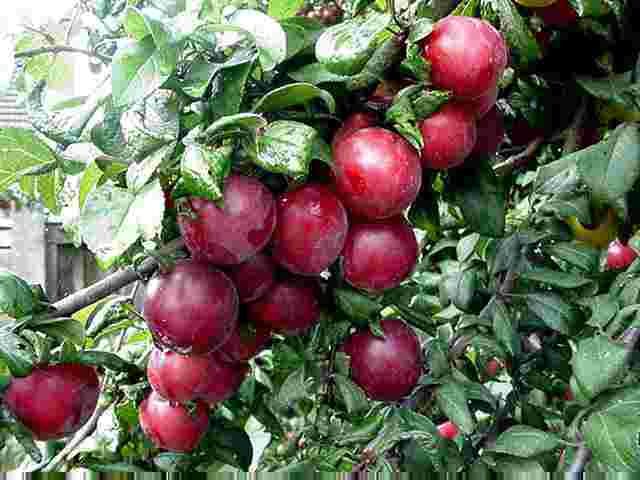
Zone 2 – A very hardy Plum tree with showy fragrant white flowers in spring and tasty bright red fruit in late summer, great for canning and fresh eating; rounded form, quite ornamental; best pollinators are Canada, American, or Pembina Plum and Toka Plum. A late season, medium size, freestone red plum with orange flesh. Excellent for eating and preserves. Japanese plum group. Prefers a moist, well-drained soil. Note: Brookgold will not pollinate Brookred.
‘Lee Red’
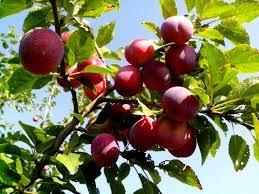
Zone 2 – Very hardy a hardy Alberta plum bred by the late Lloyd Lee of Barrhead, which is about an hour further north of us at Bon Accord, Alberta. These very tasty purplish-red plums are extremely juicy and sweet with a wonderful plum flavour! Great for fresh eating, these are the first plums we eat in the season, ready to harvest by early August in most years. Orange fleshed and clingstone, plums average 4 cm (1 1/2″) in size. Pollinate with Canadian or American plum.
‘Patterson Pride’
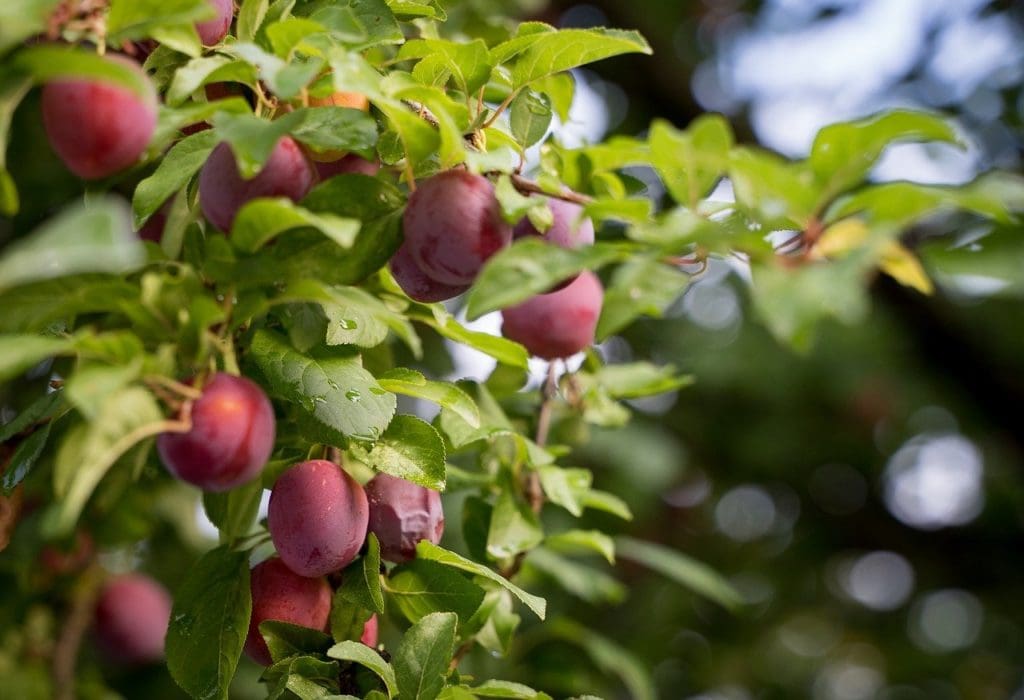
Zone 2 – is a vivid red-skinned plum (4-5 cm diameter) with golden flesh and a waxy bloom on the outside. This plum was developed by Dr. Cecil Patterson at the University of Saskatchewan 60+ years ago, in 1960. Its growth habit is semi-dwarf with weeping branches and the fruit matures in September which is later than most plums. It is a great fresh eating freestone plum with sweet, firm flesh and skin that is not sour. Its top flavour sets it apart from the other hybrid varieties.
‘Fofonoff’ aka Homesteader
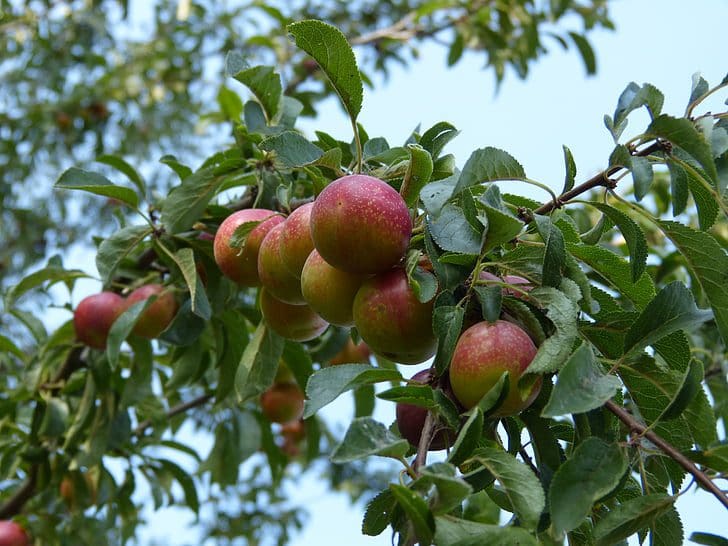
Zone 2 – is a hardy gold plum tree and is suited to the cold climate, selected by Wasal Fofonoff, in 1973. The skin of the Fofonoff is very tender, with a lime green overlay with flushes of red. It is freestone plum, very fragrant, and a good keeper. It has firm, juicy, and sweet flesh, and is delicious to eat out of hand. The fruits start to mature Mid-August and will is quite large, it gets to be about 4 cm (2”) in diameter.
‘Grenville’

Zone 3 and produces red-orange plums with golden flesh. It is a large plum, mild and sweet in flavour. Grenville plums produce large fruit (5 to 6 cm in size) that are sweet and juicy – perfect for fresh eating. They are also one of our only orange-coloured plums when ripe, which is fitting as they’re ready to harvest in September. Clingstone fruit. This plum was introduced in 1941 by the Horticultural Division of the Central Experimental Farm in Ottawa, Ontario.
‘Pembina’
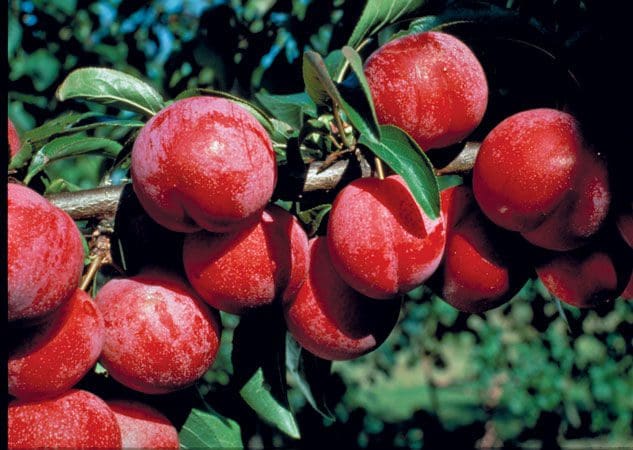
Zone 2b – Very hardy – an upright tree great for backyards and rural areas. This hardy plum has done very well in our orchard at Prairie Gardens. We recommend pairing with Patterson Pride Plum or Wild Plum as these varieties cross pollinate well with each other. Pembina Plum’s famously large red fruit grows to over 2 inches with thick, acidic skin and sweet flesh. People love this fruit for fresh eating, baking, and preserving. Do not delay in collecting these plums when ripe. If left too long, the fruit will fall off the tree.
‘Ptitsin #5’
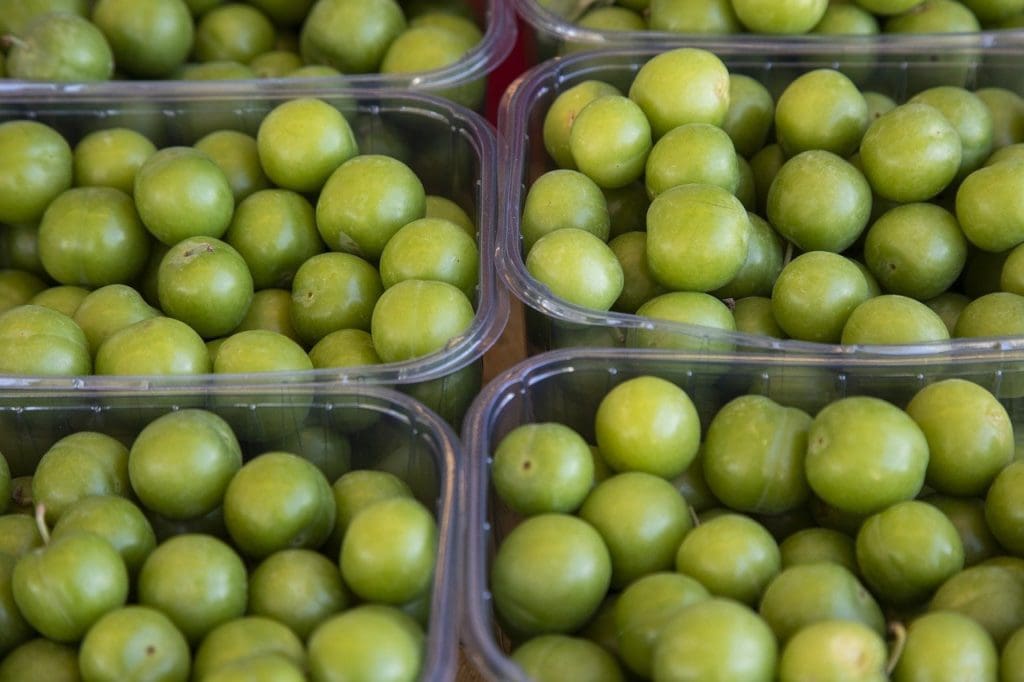
Zone 2 – Very hardy – These rare plums check all the right boxes. They look a bit like the famous [Green-Gage Plum – which is not hardy here] sweet, perfect for fresh eating or for dessert. These are firm, freestone and surprisingly sweet. What a nice plum and easy to eat fresh out of hand. They are also an effective pollinator for hybrid plums like Lee Red, Ivanovka, Sprout’s Sunshine, and Patterson Pride. They’re ready by mid-August, so they give an early start to the plum season. Not to mention their striking green colour!
‘Queen of Hearts’

Zone 3. A late season, medium size, freestone purple plum with red flesh. Extremely flavorful. Most similar to Pembina. Excellent for eating and preserves. Pollinate with Brookred Plum, Pembina Plum or Western Sand Cherry. Prefers a moist, well-drained soil.
‘Sprout’s Sunshine’

Mirabelle Plum Tree Juicy Garden Tree Ripe Fruit
Zone 2 – a flavourful plum which was selected by Amanda Chedzoy, of Sprout Farms, which is right next door to us in Sturgeon County. They are a midsized yellow-green coloured plums that are firm, yellow fleshed and semi freestone. Sprout’s Sunshine have a delicious balance between sweet and sour in taste, and their firmness proves to be an excellent trade for baking! These plums produce good yields and average 3 to 4 cm (1 1/2″) in size. Sprout’s Sunshine plums ripen around late August and keep well after harvesting.
‘Superior’
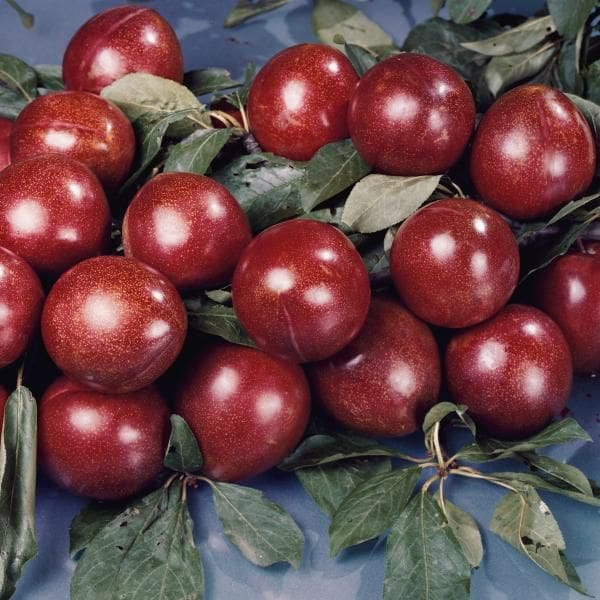
Zone 3 / Zone 4 – A gorgeous large plum with dark red skin, and yellow flesh that is firm, meaty, It is a clingstone. This plum gets it name from its great flavour and large fruit – when you bite into it, you nod and smile – yes – this is superior! is great eaten fresh, or used as a jam. There are beautiful white blooms in early spring, with fruit ripe to harvest in July. This variety prefers well-drained and loamy soil. The Superior Plum requires either an American/Japanese plum to cross-pollinate. Grows up to 8,000 Feet Elevation, a good choice for the mountains! A precocious bearer, meaning it sets fruit on young trees at year 5. It has done well in our Bon Accord, AB orchard in a protected yard.
‘Tecumseh’
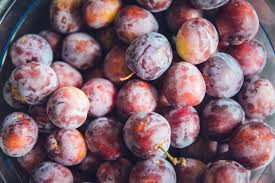
Zone 3 – A densely branched, upright tree that bears medium sized deep purple plums with juicy red flesh. The Tecumseh plums are good for eating fresh, as a jam, or a jelly. The plums ripen in September and and require a Canadian Plum, Brookgold, Brookred, Ptitsen #5, Pembina for pollination. Prefers well-drained soils. Prune when young to create an open branching structure so that there is even light distribution and more consistent ripening for the plums. It is another hardy hybrid developed by N.E. Hansen in South Dakota introduced in 1923. He named it in honour of the celebrated Shawnee Nation Chief Tecumseh, a leader and great orator who worked for tribal unity, but died in the War of 1812. Although it is not well known, some plum enthusiasts consider it to be Hansen’s best introduction. Bright red, mid-sized fruit with sweet, juicy golden flesh is excellent for fresh eating, but firm enough for processing. Reliable and quite productive, Tecumseh seems resistant to most insects as well as brown rot.
‘Toka’
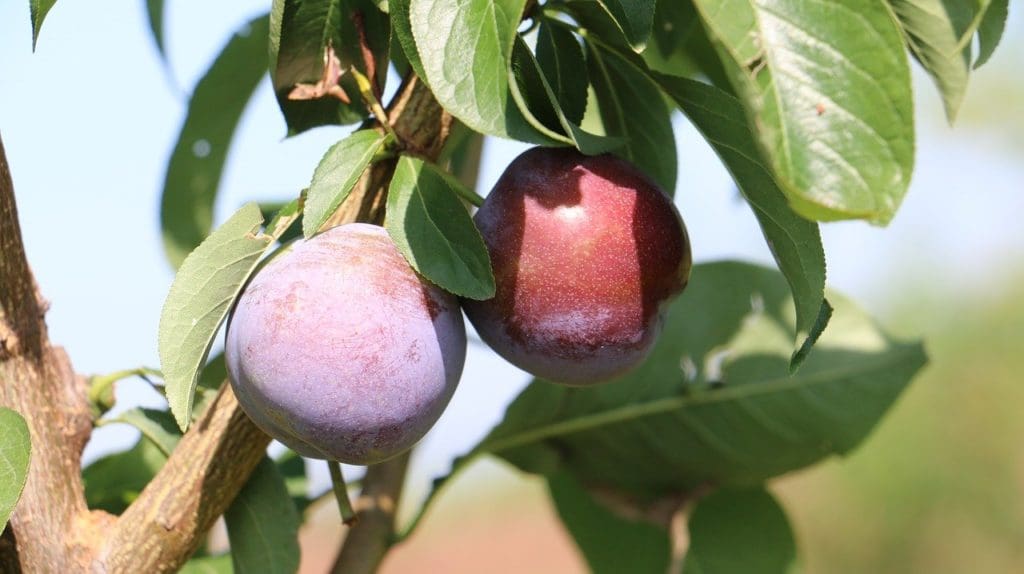
Zone 3 – Known as the Bubblegum Plum, yes, it tastes like the essence of bubblegum. It is so sweet and candy like you become addicted! Beautiful bright red fruit with an apricot-colored flesh, this plum tree has lots to offer the home orchardist. Not only is it sweet and tasty, and a beautiful ornamental plant – it’s the hardest working pollination partner on the block. A work-horse in the orchard, the Toka Plum needs to be in your next tree order. Toka is hardy down to a whopping -40C, it grows to 15 to 20 feet tall, a small tree that is a manageable size for any home gardener. The tree’s mature spread runs between 12 and 18 feet, but with its vase like shape the widest point of the spread is at the very top of the tree. Like all plum trees, the Toka Plum loves full sun and a well-drained, composted soil. Mix your soil with nutritional compost to ensure good moisture retention with optimal drainage. When planted properly it will reward you with beautiful medium-sized purple-red plums sporting a full flavored, pretty yellow/orange flesh. To ring in the arrival of spring, the Toka Plum Tree explodes with an abundance of fragrant white flowers. The visual impact of the bloom period makes the Toka Plum a standout ornamental tree. It is also what makes the Toka Plum such a good pollinator. Those sweet-scented blossoms attract all the best pollinators to your garden. While they are having a party in your Toka Plum Tree, they spread the wealth all over the plum neighborhood. It was developed by Dr. N.E Hanson from the South Dakota Experiment Station and is now considered a heritage plum, as it was introduced over 100 years ago, in 1911.
Cherry Plum Varieties (P. besseyi x P. salicina)
‘Convoy’
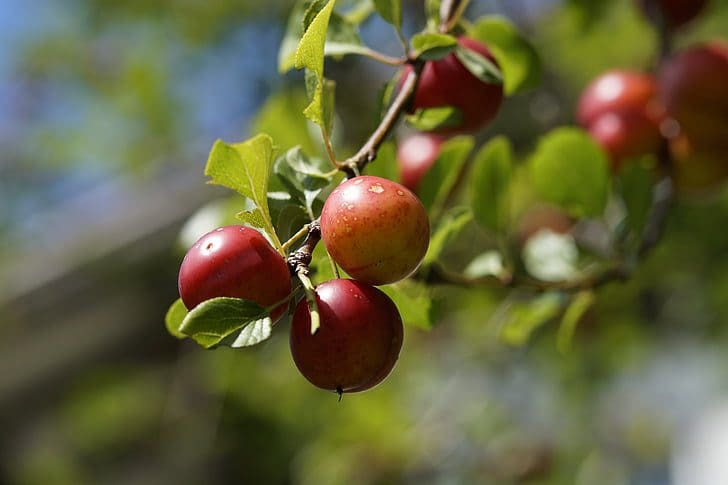
Zone 2a – a large that produces scarlet round fruit (technically ‘drupes’) with purple overtones and yellow flesh which are usually ready for picking from late summer to early fall. Note that the fruits have hard inedible pits inside which must be removed before eating or processing. The fruits have a sweet taste and a firm texture like a plum. Excellent to eat out of hand, for preserves, jams and canning. The Convoy Cherry-Plum is blanketed in stunning clusters of fragrant white flowers along the branches in mid spring before the leaves. It is a multi-stemmed shrub with an upright spreading habit of growth. This is a relatively low maintenance plant, and is best pruned in late winter once the threat of extreme cold has passed. It is a good choice for attracting birds to your yard. It is excellent for fruit forests, mass planting, or for a hedge or screening. Convoy Cherry-Plum will grow to be about 12 feet tall at maturity, with a spread of 8 feet.
‘Coutts #3’
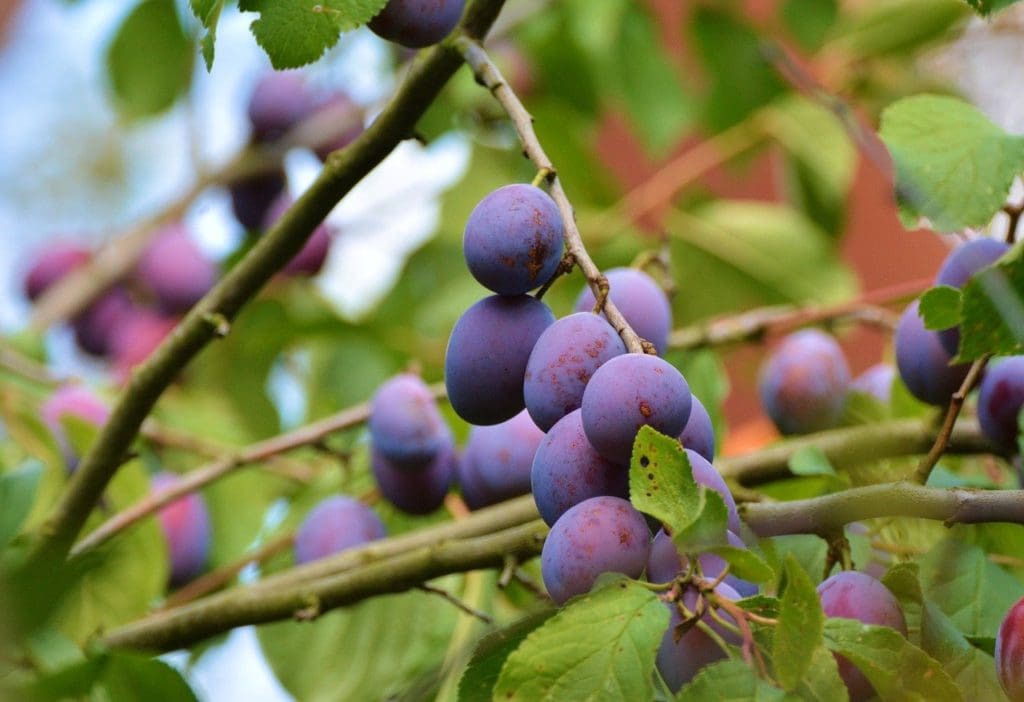
Zone 2 This is a new introduction for 2022! Small tree with very fragrant, white blossoms in spring. Produces medium-sized blue-purple fruit with unique golden flesh in mid August. A Canadian introduction, developed by Jeffries Nursery in Manitoba. Needs another plum for cross-pollination. Canadian or American plum or with other cherry plum or western sandcherry.
‘Jefchum’ aka ‘Mustang’
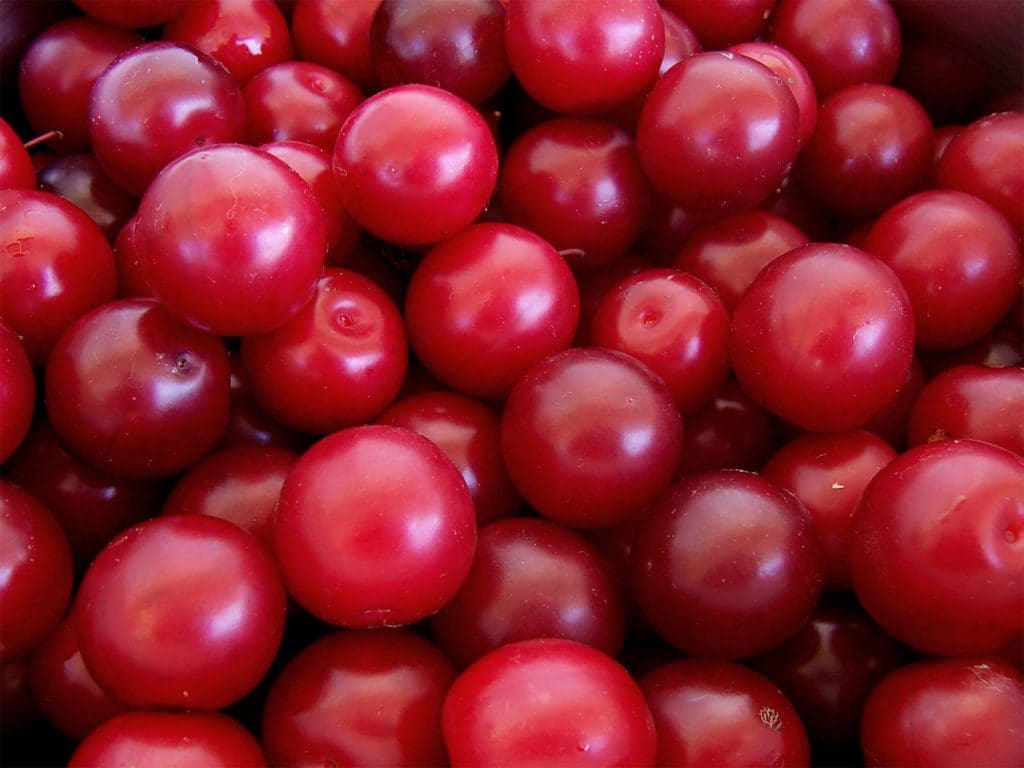
Zone 2 – Our only bush-form cherry-plum, Mustang is a must-have for any cherry-plum enthusiast! This small plum only gets 8′ tall by 8′ wide, making it ideal for small spaces. It produces a smaller plum that is very sweet with a flavour strongly reminiscent of a sweet cherry. Fruit ripens in late August. Mustang Cherry-Plum is also commonly used as a clonal rootstock for those interested in grafting. Mustang requires a second plum for cross-pollination. We recommend Sapalta or Compass for cross-pollination. Developed at Jeffries Nursery in Manitoba. Good choice for fruit forests, or windbreak hedges as is super hardy.
‘Manor’
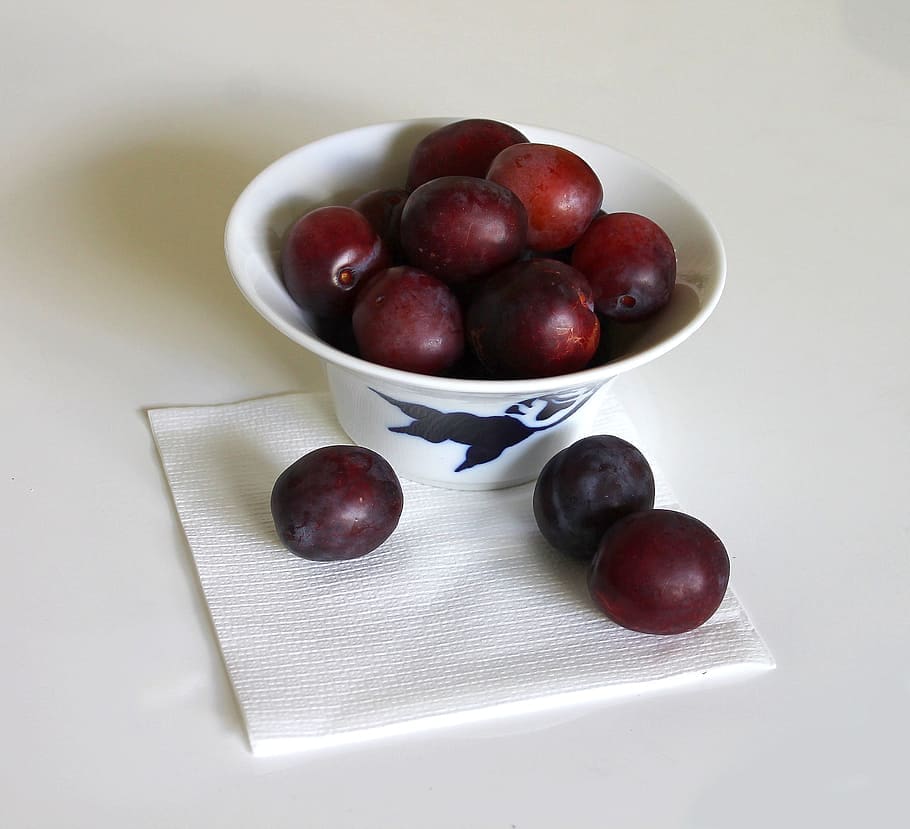
Zone 2 Manor cherry-plum produces a small fruit, about 2.5-3cm in diameter; that is very distinctive both in appearance and taste. It is perfectly round with dark purple skin, almost black when completely ripe, and dark, red-purple flesh. It is often rated as among the best of the cherry plums, along with Opata. The skin is thin and tender with a mild taste, and the flesh is almost freestone; tender and juicy with a very nice sweet flavour, and only a slight astringency. Some people prefer to pick and eat it a little earlier, when it is firmer and more astringent, but most prefer it when it is completely ripe and almost black in colour. It serves well for a variety of purposes, being very agreeable for fresh eating, but also very good for jam and for canning. Pollinates with a black plum or a different cherry plum. One of the heaviest producers of plums.
‘Opata’

The Verry Cherry Plum is a hybrid of the two seasonal stone fruits now available in grocery stores nationwide.
Zone 2 The fruit is more like a plum than a cherry, but is smaller than most plums. It measures 3 cm in diameter on average, with an attractive red/green exterior and yellowish-green flesh. The flesh is freestone and its texture is firm, but juicy. Its flavour is very pleasant and sweet, with only a hint of acidity. Overall, Opata is generally considered one of the best-tasting of existing cherry-plum varieties: it makes a great dessert out of the hand and is decent for preserves. The fruit is ready for harvest in mid to late August, and like most stone fruits, does not store for very long. – Opata is the Sioux word for ‘bouquet’. This exceptionally cold-hardy low, spreading shrub produces masses of fragrant white blossoms and delicious aromatic fruit. It. can be expected to bear fruit about two years after plantation. In order to produce fruit, this plum tree needs a Canada plum or another cherry-plum such as Manor.
‘Sapalta’
Zone 3 – Sweet drifts of white blossoms; this unique plum-cherry cross that becomes loaded with dark purplish-red, small fruit that’s sweet-tart and firm for fresh eating right off the tree! The fruit has purple-black sweet juicy flesh that gets its zing from the skin. Fragrant blooms in spring are followed by a late summer harvest among a canopy of lush green foliage. Mid-sized trees that can easily be kept smaller as needed to accommodate smaller lots and orchards, a bit more shrub-like, these trees can be kept fully branched to the ground or limbed up into a multi-stemmed ornamental tree form. Pollinators adore the blooms and wildlife welcomes the fruit! It makes a great privacy hedge or property definition. Every hybrid cross has a preferred pollinizer that is not always known or easily predictable. Planting a diverse set of cultivars assures adequate pollination. Any other Cherry Plum cultivars, American Plum, ‘Compass’ and ‘Toka’ are all included as pollinizers to increase pollination.
Planning for your Orchard: Size and Habit
It is recommended to train plum trees with a central leader system. This will give your plum tree studier branches that are less likely to break with fruit load. You can also train your tree to a single trunk vase shape with approximately six well-spaced main branches. Mature plums trees vary in height from 3m to 6m.
Looking After Them: Pruning
Pruning each year will help control the size of your tree and make it easier to harvest the fruit. Prune off suckers coming from the rootstock and vegetative water sprouts growing straight up from main branches. Keep suckers mowed as they pop up in the grass.
Watering Plums like well drained soil, and an infrequent but adequate water supply. Irrigation is a must in southern Alberta. Run drip lines on both sides of the tree, at the drip line. Having said that – they love water, but too much is not a good thing, especially later in the summer. As a plum of European heritage, the hybrid plums are used to the milder and more consistent weather patterns in Europe, and go dormant on temperature alone, not suspecting the wily turns the weather takes here, in the north, where it can be +16C the 6th of April and -17C the next day.
Native trees are smart about our tricky weather, and go dormant and wake up on daylength and temperature, so they don’t get fooled by a warm fall or an early spring. It is good to let the grass grow to the trunk of the tree, so the sod competes with the tree for water so they slow down and set-up their buds for winter in a timely fashion. If the sap rises too soon in the spring, and we are hit with a blast of Artic air, it can literally freeze in the trunk, exploding the vascular system of the tree. Certain death. Mulching heavily at the drip line of the tree, after the ground gets cold can moderate the soil and root temperatures to delay early spring sap rise. Wood chips work well. Stay away from straw, as the mice love it and your tree bark.
Three Things to Watch Out For:
Black Knot – American plum trees are rarely affected. This is a fungal disease that affects the branches with swollen black sooty growths, which eventually kill the tree, and it is contagious. Most European and Japanese plums are susceptible to black knot. Chokecherries are susceptible; Pincherries are susceptible. If you have this disease on the wild trees in your neighborhood, or on Mayday Trees, plant the American Plums.
Shot Hole – This is a non-fatal disease that makes the leaves look like they are been literally shot-full of little holes. It is not life threatening, just a bit unsightly – clean up the leaves in the fall so it doesn’t recur in the spring. You can treat with a fungicide if desired.
Aphids – An aphid infestation in plum trees are indicated by tightly curled, deformed leaves, which are usually near the ends of new plum shoots in the spring. The leaf curl plum aphid can be seen if you unfold the curled leaves. This pest is shiny and varies in color from green to brownish green or brownish yellow.
The eggs of the aphid overwinter at the base of leaf buds. And then in the spring it rapidly builds populations on new foliage, causing affected new shoots to develop tightly curled leaves. During the month of May, the aphids migrate from the plum tree to summer host plants in the aster family. The aphids then return to the plum trees in the fall to lay eggs and overwinter.
The best time to treat aphids is in the late fall or during the dormant period when the leaf is still in the bud stage. Ultrafine oils, like neem oil, or dormant oil, can smother the overwintering eggs.
Once the leaves are growing and curled, it is difficult to kill the aphids with an application of pesticides as many of the pesticides available to the homeowner require contact with the pest to get good control. Because the aphid resides in the tightly curled leaf they don’t come into contact with the pesticide, so most sprays are ineffective.
Applications of pesticide this late in the spring can also be very detrimental to any beneficial insects like ladybugs and lacewings that maybe working to help control the aphids. Pruning off the affected branch tip and disposing of the aphids with it is effective for small trees.
Plums From Our Garden Center
-
Greengage Plum
$95.00 Add to cart -
Waneta Plum
$95.00 Add to cart -
Acme Plum
$105.00 Add to cart -
Kahinta Plum
$185.00 Add to cart -
Gracious Plum
$185.00 Add to cart -
Pipestone Plum
$95.00 Add to cart -
Convoy Cherry Plum
Price range: $24.95 through $95.00 Select options This product has multiple variants. The options may be chosen on the product page -
Mustang Cherry Plum
$95.00 Select options This product has multiple variants. The options may be chosen on the product page -
Opata Cherry Plum
Price range: $105.00 through $165.00 Select options This product has multiple variants. The options may be chosen on the product page -
Manor Cherry-Plum
$105.00 Add to cart -
Coutts #3 Cherry Plum
Price range: $125.00 through $155.00 Select options This product has multiple variants. The options may be chosen on the product page
